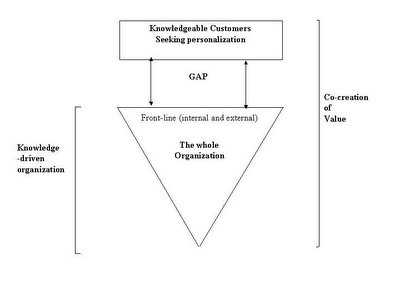In the World of luxury, this will not sound particularly new and challenging. For instance, the Richemont Group “Maisons” (French term used to represent the Brands owned by the Group) have been aiming to provide personalized product and services since their creation. However, even for them the context and the rules of competition are changing. Richemont customers, as much as for any other organization, do have increasingly access to more specific on-demand and interactive information.
Customers are more knowledgeable about luxury products and services and about our competitor’s products and services. As a direct result, they have also more choice, or more precisely, they are more aware of having a choice.
Of course, one key medium at the origin of this phenomenon is the World Wide Web.
It is now common for Cartier customers to download from a non-official web site a detailed product spec-sheet; and bring a printed copy to a Cartier boutique in order to be shown the product.
Another illustration is the frustration of Panerai Management faced with a totally legal web site selling bracelets for Panerai watches.
Even more worrying is the fast growing so-called “grey market” for watches, already a significant problem in North-America (these are genuine Richemont watches bought by wholesale accounts to be diverted onto a parallel network to be sold – usually on the Web - at discounted retail prices).
Traditional luxury companies will also face new types of competition. One of the most successful among wealthy people is fractional ownership. This is based on the old concept of time-sharing: Luxury products such as yachts, private jets, upmarket properties or luxury cars are shared by individuals who probably could afford to buy them outright, but find it much more cost-effective not to do so.
What should be a concern for the traditional luxury brands is that this concept is starting to be available for fashion products as well such as ladies bags (http://www.bagborroworsteal.com/). Furthermore, existing or potential customers can easily share experiences and opinions on a specific luxury product and its related services, therefore at best, entering a point of sale with more pertinent knowledge; or at worse, deciding to opt for the competition before a sales-executive even had a chance to promote his products. For instance, there are very successful independent websites dedicated to luxury watches and watch-making where existing and potential owners of these wonderful time pieces can share related information.
Jaeger-Le-Coultre benefits from such a website exclusively focusing on its products. It includes a Forum where customers, dealers and even JLC employees exchange experiences, ideas and opinions on various models (http://www.thepurists.com/). The key fact to note is that the website is independent: JLC management did not create it, has no input and even less control on its content.
This new competitive environment indicates that luxury Brands should focus on bridging the gap between them and their customers through co-creation of value with the customers (Prahalad & Ramaswamy, The Future of Competition, 2005). The idea is to organize companies in such a way so that all their valuable human resources based knowledge is leveraged through the creation of value for our customers and for the organization. This is done best in co-operation with the customers themselves. When a customer submits a problem at a point of sale of a particular international Brand name, the customer is in fact asking the whole company, not just the front line employee.
Now can the organization ensure that the right person with the right knowledge is solicited at the right time to satisfy the customer? This is what becoming a knowledge-driven organization is ultimately all about: satisfying our customers faster and better and increasing revenue and profit as a result. A Knowledge-driven organization is focused on providing all the knowledge tools and assistance each of its front-line collaborators could benefit from, in order to deliver a better service. A knowledge-driven organization is inherently a customer-focused organization.
The Organization/Customer Gap is reduced through product design assumed to satisfy the customers and through market analysis to adapt to each markets. The rationale is that the organization “knows” best what its customers need/want.
A Knowledge-driven Organization sees its customers at the top of the pyramid with the whole Organization at their service. The goal is to co-create with the knowledgeable customers valuable and personalized experiences. In other words, such an Organization does not sell only products and services anymore but sells experiences.
Read Verna Allee's comment to this post.

